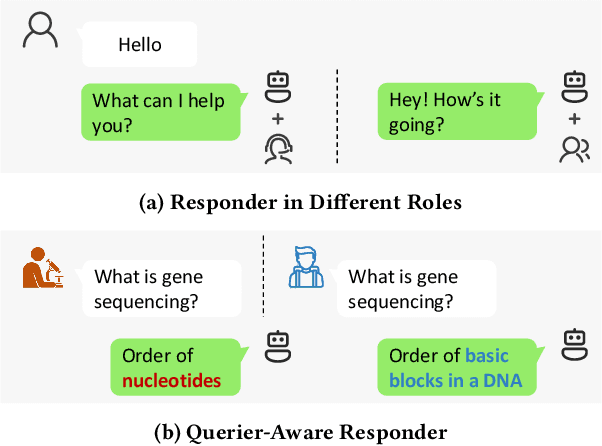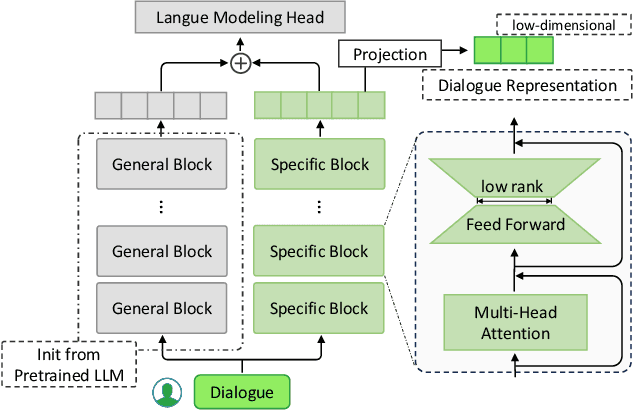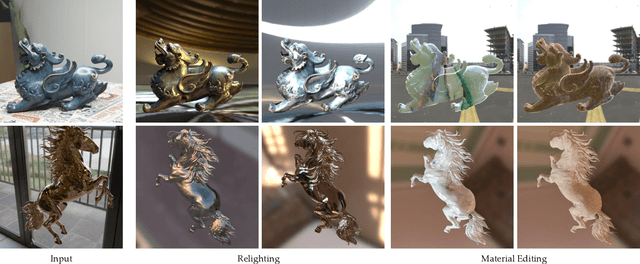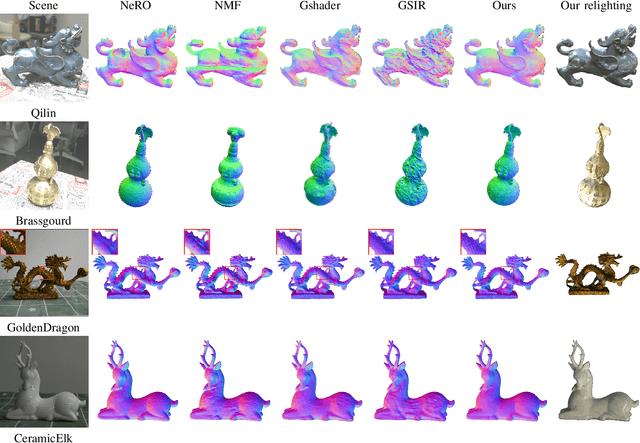Chengfei Lv
Tao Technology Department, Alibaba Group
MNN-LLM: A Generic Inference Engine for Fast Large Language Model Deployment on Mobile Devices
Jun 12, 2025Abstract:Large language models (LLMs) have demonstrated exceptional performance across a variety of tasks. However, their substantial scale leads to significant computational resource consumption during inference, resulting in high costs. Consequently, edge device inference presents a promising solution. The primary challenges of edge inference include memory usage and inference speed. This paper introduces MNN-LLM, a framework specifically designed to accelerate the deployment of large language models on mobile devices. MNN-LLM addresses the runtime characteristics of LLMs through model quantization and DRAM-Flash hybrid storage, effectively reducing memory usage. It rearranges weights and inputs based on mobile CPU instruction sets and GPU characteristics while employing strategies such as multicore load balancing, mixed-precision floating-point operations, and geometric computations to enhance performance. Notably, MNN-LLM achieves up to a 8.6x speed increase compared to current mainstream LLM-specific frameworks.
Collaborative Learning of On-Device Small Model and Cloud-Based Large Model: Advances and Future Directions
Apr 17, 2025Abstract:The conventional cloud-based large model learning framework is increasingly constrained by latency, cost, personalization, and privacy concerns. In this survey, we explore an emerging paradigm: collaborative learning between on-device small model and cloud-based large model, which promises low-latency, cost-efficient, and personalized intelligent services while preserving user privacy. We provide a comprehensive review across hardware, system, algorithm, and application layers. At each layer, we summarize key problems and recent advances from both academia and industry. In particular, we categorize collaboration algorithms into data-based, feature-based, and parameter-based frameworks. We also review publicly available datasets and evaluation metrics with user-level or device-level consideration tailored to collaborative learning settings. We further highlight real-world deployments, ranging from recommender systems and mobile livestreaming to personal intelligent assistants. We finally point out open research directions to guide future development in this rapidly evolving field.
Personalized LLM for Generating Customized Responses to the Same Query from Different Users
Dec 16, 2024



Abstract:Existing work on large language model (LLM) personalization assigned different responding roles to LLM, but overlooked the diversity of questioners. In this work, we propose a new form of questioner-aware LLM personalization, generating different responses even for the same query from different questioners. We design a dual-tower model architecture with a cross-questioner general encoder and a questioner-specific encoder. We further apply contrastive learning with multi-view augmentation, pulling close the dialogue representations of the same questioner, while pulling apart those of different questioners. To mitigate the impact of question diversity on questioner-contrastive learning, we cluster the dialogues based on question similarity and restrict the scope of contrastive learning within each cluster. We also build a multi-questioner dataset from English and Chinese scripts and WeChat records, called MQDialog, containing 173 questioners and 12 responders. Extensive evaluation with different metrics shows a significant improvement in the quality of personalized response generation.
SpatialDreamer: Self-supervised Stereo Video Synthesis from Monocular Input
Nov 18, 2024Abstract:Stereo video synthesis from a monocular input is a demanding task in the fields of spatial computing and virtual reality. The main challenges of this task lie on the insufficiency of high-quality paired stereo videos for training and the difficulty of maintaining the spatio-temporal consistency between frames. Existing methods primarily address these issues by directly applying novel view synthesis (NVS) techniques to video, while facing limitations such as the inability to effectively represent dynamic scenes and the requirement for large amounts of training data. In this paper, we introduce a novel self-supervised stereo video synthesis paradigm via a video diffusion model, termed SpatialDreamer, which meets the challenges head-on. Firstly, to address the stereo video data insufficiency, we propose a Depth based Video Generation module DVG, which employs a forward-backward rendering mechanism to generate paired videos with geometric and temporal priors. Leveraging data generated by DVG, we propose RefinerNet along with a self-supervised synthetic framework designed to facilitate efficient and dedicated training. More importantly, we devise a consistency control module, which consists of a metric of stereo deviation strength and a Temporal Interaction Learning module TIL for geometric and temporal consistency ensurance respectively. We evaluated the proposed method against various benchmark methods, with the results showcasing its superior performance.
GlossyGS: Inverse Rendering of Glossy Objects with 3D Gaussian Splatting
Oct 17, 2024



Abstract:Reconstructing objects from posed images is a crucial and complex task in computer graphics and computer vision. While NeRF-based neural reconstruction methods have exhibited impressive reconstruction ability, they tend to be time-comsuming. Recent strategies have adopted 3D Gaussian Splatting (3D-GS) for inverse rendering, which have led to quick and effective outcomes. However, these techniques generally have difficulty in producing believable geometries and materials for glossy objects, a challenge that stems from the inherent ambiguities of inverse rendering. To address this, we introduce GlossyGS, an innovative 3D-GS-based inverse rendering framework that aims to precisely reconstruct the geometry and materials of glossy objects by integrating material priors. The key idea is the use of micro-facet geometry segmentation prior, which helps to reduce the intrinsic ambiguities and improve the decomposition of geometries and materials. Additionally, we introduce a normal map prefiltering strategy to more accurately simulate the normal distribution of reflective surfaces. These strategies are integrated into a hybrid geometry and material representation that employs both explicit and implicit methods to depict glossy objects. We demonstrate through quantitative analysis and qualitative visualization that the proposed method is effective to reconstruct high-fidelity geometries and materials of glossy objects, and performs favorably against state-of-the-arts.
GaussianTalker: Speaker-specific Talking Head Synthesis via 3D Gaussian Splatting
Apr 28, 2024



Abstract:Recent works on audio-driven talking head synthesis using Neural Radiance Fields (NeRF) have achieved impressive results. However, due to inadequate pose and expression control caused by NeRF implicit representation, these methods still have some limitations, such as unsynchronized or unnatural lip movements, and visual jitter and artifacts. In this paper, we propose GaussianTalker, a novel method for audio-driven talking head synthesis based on 3D Gaussian Splatting. With the explicit representation property of 3D Gaussians, intuitive control of the facial motion is achieved by binding Gaussians to 3D facial models. GaussianTalker consists of two modules, Speaker-specific Motion Translator and Dynamic Gaussian Renderer. Speaker-specific Motion Translator achieves accurate lip movements specific to the target speaker through universalized audio feature extraction and customized lip motion generation. Dynamic Gaussian Renderer introduces Speaker-specific BlendShapes to enhance facial detail representation via a latent pose, delivering stable and realistic rendered videos. Extensive experimental results suggest that GaussianTalker outperforms existing state-of-the-art methods in talking head synthesis, delivering precise lip synchronization and exceptional visual quality. Our method achieves rendering speeds of 130 FPS on NVIDIA RTX4090 GPU, significantly exceeding the threshold for real-time rendering performance, and can potentially be deployed on other hardware platforms.
IntrinsicAnything: Learning Diffusion Priors for Inverse Rendering Under Unknown Illumination
Apr 17, 2024Abstract:This paper aims to recover object materials from posed images captured under an unknown static lighting condition. Recent methods solve this task by optimizing material parameters through differentiable physically based rendering. However, due to the coupling between object geometry, materials, and environment lighting, there is inherent ambiguity during the inverse rendering process, preventing previous methods from obtaining accurate results. To overcome this ill-posed problem, our key idea is to learn the material prior with a generative model for regularizing the optimization process. We observe that the general rendering equation can be split into diffuse and specular shading terms, and thus formulate the material prior as diffusion models of albedo and specular. Thanks to this design, our model can be trained using the existing abundant 3D object data, and naturally acts as a versatile tool to resolve the ambiguity when recovering material representations from RGB images. In addition, we develop a coarse-to-fine training strategy that leverages estimated materials to guide diffusion models to satisfy multi-view consistent constraints, leading to more stable and accurate results. Extensive experiments on real-world and synthetic datasets demonstrate that our approach achieves state-of-the-art performance on material recovery. The code will be available at https://zju3dv.github.io/IntrinsicAnything.
AUTOACT: Automatic Agent Learning from Scratch via Self-Planning
Jan 17, 2024Abstract:Language agents have achieved considerable performance on various complex tasks. Despite the incessant exploration in this field, existing language agent systems still struggle with costly, non-reproducible data reliance and face the challenge of compelling a single model for multiple functions. To this end, we introduce AutoAct, an automatic agent learning framework that does not rely on large-scale annotated data and synthetic trajectories from closed-source models (e.g., GPT-4). Given limited data with a tool library, AutoAct first automatically synthesizes planning trajectories without any assistance from humans or strong closed-source models. Then, AutoAct leverages a division-of-labor strategy to automatically differentiate based on the target task information and synthesized trajectories, producing a sub-agent group to complete the task. We conduct comprehensive experiments with different LLMs, which demonstrates that AutoAct yields better or parallel performance compared to various strong baselines. We even notice that AutoAct, when using the Llama-2-13b model, can achieve performance comparable to that of the zero-shot GPT-3.5-Turbo agent. Code will be available at https://github.com/zjunlp/AutoAct.
Unveiling the Siren's Song: Towards Reliable Fact-Conflicting Hallucination Detection
Oct 18, 2023



Abstract:Large Language Models (LLMs), such as ChatGPT/GPT-4, have garnered widespread attention owing to their myriad of practical applications, yet their adoption has been constrained by issues of fact-conflicting hallucinations across web platforms. The assessment of factuality in text, produced by LLMs, remains inadequately explored, extending not only to the judgment of vanilla facts but also encompassing the evaluation of factual errors emerging in complex inferential tasks like multi-hop, and etc. In response, we introduce FactCHD, a fact-conflicting hallucination detection benchmark meticulously designed for LLMs. Functioning as a pivotal tool in evaluating factuality within "Query-Respons" contexts, our benchmark assimilates a large-scale dataset, encapsulating a broad spectrum of factuality patterns, such as vanilla, multi-hops, comparison, and set-operation patterns. A distinctive feature of our benchmark is its incorporation of fact-based chains of evidence, thereby facilitating comprehensive and conducive factual reasoning throughout the assessment process. We evaluate multiple LLMs, demonstrating the effectiveness of the benchmark and current methods fall short of faithfully detecting factual errors. Furthermore, we present TRUTH-TRIANGULATOR that synthesizes reflective considerations by tool-enhanced ChatGPT and LoRA-tuning based on Llama2, aiming to yield more credible detection through the amalgamation of predictive results and evidence. The benchmark dataset and source code will be made available in https://github.com/zjunlp/FactCHD.
NeuDA: Neural Deformable Anchor for High-Fidelity Implicit Surface Reconstruction
Mar 04, 2023Abstract:This paper studies implicit surface reconstruction leveraging differentiable ray casting. Previous works such as IDR and NeuS overlook the spatial context in 3D space when predicting and rendering the surface, thereby may fail to capture sharp local topologies such as small holes and structures. To mitigate the limitation, we propose a flexible neural implicit representation leveraging hierarchical voxel grids, namely Neural Deformable Anchor (NeuDA), for high-fidelity surface reconstruction. NeuDA maintains the hierarchical anchor grids where each vertex stores a 3D position (or anchor) instead of the direct embedding (or feature). We optimize the anchor grids such that different local geometry structures can be adaptively encoded. Besides, we dig into the frequency encoding strategies and introduce a simple hierarchical positional encoding method for the hierarchical anchor structure to flexibly exploit the properties of high-frequency and low-frequency geometry and appearance. Experiments on both the DTU and BlendedMVS datasets demonstrate that NeuDA can produce promising mesh surfaces.
 Add to Chrome
Add to Chrome Add to Firefox
Add to Firefox Add to Edge
Add to Edge